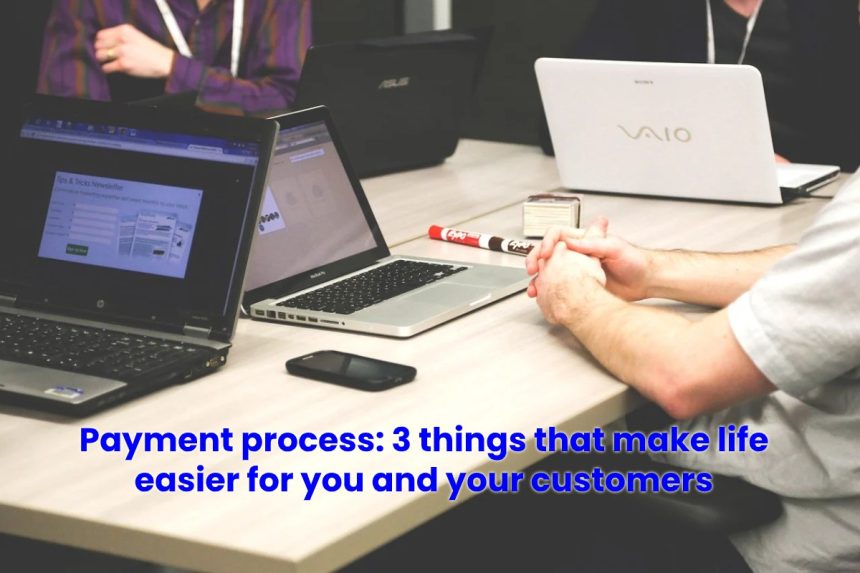Imagine entering a store and taking something off the shelf. But there is a little challenge: you can’t find a price tag. Okay, don’t you think so bad because you can estimate the price, which will probably not be that high. But then there is another challenge – with the payment process: Because a till is nowhere to be seen.
You walk through all the corridors, and only after a few minutes do you find the till in a dark corner at the back of the shop. It is not busy. After waiting impatiently for a while, an employee comes to the checkout with a sluggish gait and a sullen expression.
It is hard to believe: there is another problem! You say you would like to pay by card. The ill-tempered employee slowly shakes his head and points to a sign behind you that you had not noticed up to this point: “ONLY CASH PAYMENT.”
You rummage in your pants pockets in vain. Then run quickly to the car that has some change in it. It’s just enough. You come back and pay.
The employee slowly shuffles away.
Stop! What about the receipt? The employee sighs, returns give the cash register a rough push and hands you a receipt.
As soon as you walk out, it is clear to you that you will not bring ten horses to this shop again. After all, you just wanted to buy something small. Instead, you suddenly found yourself in the middle of a grueling, time-consuming mini-drama.
But what if your customers experience something similar to your company?
Payment Process – More Than Just Customer Service
When it comes to customer service, most people only think of product selection, purchasing, and support. Invoicing and payment processes are at most marginal issues. After all, the most important thing is that you get your money, right?
Not quite. Customer satisfaction is also crucial. If your customers can pay their bills quickly and easily, they’ll be happier and more likely to come back. More importantly, you will potentially get your money faster. This naturally has a positive effect on cash flow.
Besides, the small companies’ payment process is often characterized by inefficient processes that imperceptibly become a time-waster. In fact, according to the latest research, invoicing accounts for an average of 14.2% of a company’s administrative workload. If you also take into account the dispatch of invoices, the checking of incoming payments, and the follow-up on the 45% of invoices that are not paid within 30 days, this percentage increases even further.
In the following, we give you tips on how you can increase your and your customers’ satisfaction with an optimal payment process.

1. Several Payment Options During the Checkout Process
If customers have to pay their bills in a way that they are not used to, payment delays can occur. They resolve to deal with it as soon as they have some rest … and all too often the bill is then forgotten.
A good software solution offers flexible payment options so that each customer can choose the fastest, easiest, and most convenient method. For you, this means faster incoming payments, fewer forgotten invoices, and less follow-up time for payments that have not been received.
Some providers integrate their invoices into their payment system so that customers can pay directly from the invoice with just a few clicks by credit card or direct debit. The tedious search for bank details and filling out transfer forms is a thing of the past.
Our study showed that it took customers an average of 35 days to make payments via wire transfer. If invoices have an immediate pay button or payment by phone is possible, this time is reduced to just 20 days. That means more money in your account and less time spent on unpleasant payment reminders.
2. Automation of Invoice Tracking
If you set up a system that automatically notifies you when invoices and payments are received, you will know exactly which payments to remind you. In this way, you avoid unnecessary effort for the comparison of invoice numbers and account statements.
Information on payment methods, times, and amount transfers automatically and traces using the accounting software.
So you can easily refute excuses from customers at any time. If a customer claims they didn’t receive an invoice (which is quite common in fact), you can tell them the date and time the accounting software says the invoice was opened. You can further automate the process by integrating your accounting software with a cloud-based invoice processing solution.
You can even predict which customers are most likely to be late and adjust their bills accordingly. With the help of appropriate software, it carries out a risk assessment for each customer when they first purchase. Based on this data, it can be decided on a case-by-case basis in which the loan amount should be offered. In the event of late payment, reminders are sent automatically.
3. Correct Invoices
There is hardly anything more strenuous and time-consuming than discussing possible errors in invoices with customers or correcting the actual errors that inevitably arise from manual processing. As a result, It annoys the customer and makes you upset. Ultimately, it affects customer relationships. Because nobody wants to waste their precious time on such annoyances.
Fortunately, you can avoid the whole thing easily with a function in the accounting software that automatically creates an invoice from an offer. If your solution doesn’t have such a feature, copy the quote’s information and paste it directly into the invoice form.
As already mentioned, the optimal solution would, of course, be for the sales force to convert the offer directly into an invoice, thereby eliminating the expense of the finance department. For this reason, it is best to go for a complete solution with extensive functionality. If all employees use the same platform, the introduction of such workflows is a breeze, and the whole company benefits from it.

